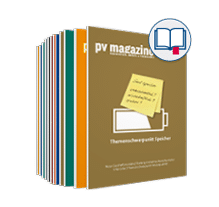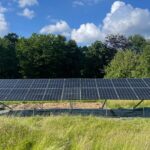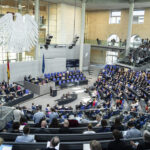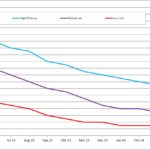Seit dem 1. Oktober 2021 sind die Elektrizitätsnetzbetreiber verpflichtet, Redispatch-Maßnahmen einschließlich der Abregelung von Erzeugung aus Erneuerbaren Energien bilanziell auszugleichen. Doch die Umsetzung des neuen Redispatch-Regimes, dem einheitliche Prozesse auf Basis von Plan- oder Prognosewerten zugrunde liegen, konnte nicht fristgerecht umgesetzt werden. Die bis 31. Mai 2022 befristete Übergangslösung findet bis heute Anwendung – zur größten Unzufriedenheit der Anlagenbetreibenden und Direktvermarkter.
In der Übergangslösung erfolgt – sofern kein bilanzieller Ausgleich durch den Netzbetreiber vorgenommen wird – der bilanzielle Ausgleich durch den Bilanzkreisverantwortlichen der betroffenen Einspeisestelle, der dafür einen Aufwendungsersatz vom Anschlussnetzbetreiber erhält. Der Bilanzkreisverantwortliche – meist der Direktvermarkter – muss den Ausgleich, etwa durch den An- oder Verkauf von Strommengen selbst vornehmen. Die Berechnung und Entschädigung der Ausfallenergie ist komplex, zeitaufwendig und für die Beteiligten meist undurchsichtig. Die Wartezeit von Anlagenbetreibenden auf die finanzielle Vergütung der Ausfallarbeit beträgt nicht selten mehrere Monate.
Im September letzten Jahres hat die BNetzA ein Festlegungsverfahren zur Fortentwicklung des Redispatch 2.0 eingeleitet. So sollen wesentliche Bausteine des Redispatch-Regimes pragmatisch angepasst werden, um die Kompensationszahlungen und wesentlichen Clearing-Prozesse zu kurieren und den flächendeckenden bilanziellen Ausgleich in den Verteilernetzen zu fördern. Trotzdem bleiben Zahlungsansprüche rückführend bis in den Oktober 2021 bestehen und häufen sich weiter an.
Bei unserem WebPraxistag bringen wir Sie auf den aktuellen Stand der Umsetzung des Redispatch 2.0-Regimes. Folgende Inhalte erwarten Sie:
Die Redispatch 2.0-Übergangslösung
Erfahren Sie die Hintergründe der Übergangslösung, was diese genau beinhaltet und welche Folgen der Wegfall des bilanziellen Ausgleichs für Anlagenbetreiber, Netzbetreiber und Direktvermarkter hat.
Praxisbericht – Was läuft gut? Wo hakt es?
Lernen Sie, welche praktischen Auswirkungen die Übergangslösung auf die Marktakteure hat, welche Herausforderungen beim Datenaustausch bestehen, welche Erfahrungen beim Testbetrieb gemacht wurden und wie der Exitplan aus der Übergangslösung aussieht.
Die Umsetzung durch Verteilnetzbetreiber (VNB)
Erhalten Sie einen Einblick in die Umsetzung bei den VNB und bringen Sie sich auf den aktuellen Stand, was Stammdatenaustausch und Kommunikationsprozesse angeht. Erfahren Sie, welche Erfahrungen VNB mit dem Testbetrieb gemacht haben und was sie bei der Fortentwicklung des Redispatchs erwarten.
Die Umsetzung durch die Direktvermarkter
Erfahren Sie, welche Hemmnisse den Direktvermarktern bei der Durchführung des bilanziellen Ausgleichs begegnen und wie das Clearing mit den Verteilnetzbetreibern erfolgt. Wir illustrieren, wie sich der Mischpreis zusammensetzt und abgerechnet wird und welche Schwierigkeiten die z.T. immensen Verzögerungen bei der Auszahlung der Entschädigungen hervorrufen.
Die Fortentwicklung des Redispatch 2.0 durch die Bundesnetzagentur
Erfahren Sie, mit welchen regulatorischen Herausforderungen die BNetzA bei der Fortentwicklung des Redispatch 2.0 zu rechnen ist. Wir informieren Sie, welche Erfahrungsberichte im Abrechnungsverfahren in die angepassten Festlegungen einfließen.
Melden Sie sich noch heute an und erfahren Sie frühzeitig, welche wichtigen Änderungen beim Redispatch 2.0-Regime zu erwarten sind.





